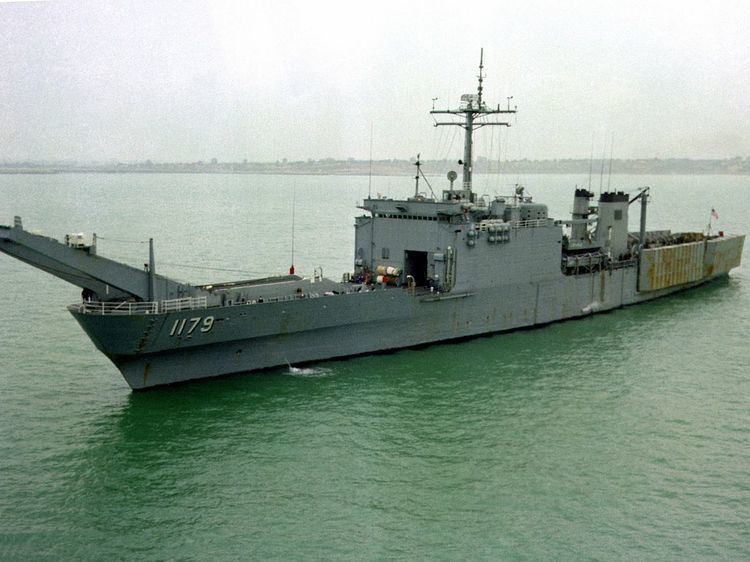Succeeded by None In commission 1969–2002 (USN) | Built 1966–1972 | |
 | ||
Builders Philadelphia Naval Shipyard
National Steel and Shipbuilding Company Operators Initial operator
United States Navy
Later operators (onsold after US service)
Royal Australian Navy
Brazilian Navy
Chilean Navy
Royal Malaysian Navy
Mexican Navy
Royal Moroccan Navy
Peruvian Navy (proposed)
Republic of China Navy
Spanish Navy Preceded by De Soto County-class tank landing ship | ||
Newport-class tank-landing ships are an improved class of tank-landing ship (LST) designed for the United States Navy. The ships were intended to provide substantial advantages over their World War II-era predecessors. Twenty were completed, of which twelve were eventually sold to foreign navies, while the remaining eight have since been decommissioned.
Class description
Twenty ships of the Newport tank landing ship class were built to replace the traditional bow door design LST.
The Newport class has higher speeds and trimmer lines than the LSTs of World War II. The vessels have two huge derricks used to extend and retract a bow ramp. The 110-foot (34 m) ramp has a 75-ton capacity.
The Newport class is the first amphibious ship to be fitted with an internal side propulsion unit located below the waterline near the bow. The bow thruster allows the bow to be pushed from side to side while the stern remains nearly stationary.
This class of LST also has a stern gate. It allows them to load and launch amphibious assault vehicles, and permits sterngate matings with Landing Craft Utility (LCU) units.
